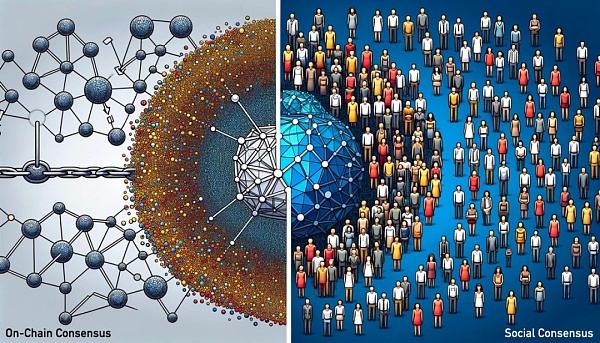Author: 0xmiddle; Source: PermaDAO
Indices are high-frequency words in the context of inscriptions. So what is an index? Why do inscriptions need to rely on indexes? What significance does index winding have on inscriptions?
1. Friends who play inscriptions must often hear the word "index". Whether it is the project party or the technical boss, this word is often used in the context of inscriptions. What is it? Why does the existence of inscriptions not only rely on blockchain but also rely on indexes?
2. What we need to understand is that the essence of inscription is to use the blockchain as a hard disk to store a new one in the "remarks" field of the original transaction data. ledger to realize the issuance of tokens. This ledger will not be verified and calculated by the blockchain itself.
3. If someone transfers an asset that he does not own, or mints a token that has been minted, the inscription will still be on the chain, but It is invalid. In other words, what the inscription stores on the blockchain is a "dirty ledger" in which there are both valid data and invalid data.
4. So who is responsible for screening valid data and calculating everyone's balance? This is what "indexes" do. Of course, the index must do this according to a set of rules that has developed social consensus. For Inscription, the blockchain is just the DA layer, and the index is the real consensus layer.
5. If the index forks, then the consensus will fork and the inscription will fork. This situation will occur if index service providers such as wallets, browsers, and trading markets do not coordinate well when upgrading the index, or have differences in indexing rules.
6. This has happened many times with the Bitcoin BRC20 inscription. In October last year, some users discovered that major exchanges were running different versions of Ordinals indexers. Some inscriptions would be indexed in the newer v0.9.0, but not in earlier versions, resulting in the same account The balance is displayed inconsistently on different clients. After coordination, all parties decided to use v0.9.0 as the standard and freeze subsequent upgrades.
7. However, in January this year, the storm resurfaced. Unisat, the largest BRC20 wallet service provider, announced a unilateral update of the indexer, and two indexing rules appeared in the market again. In response to this incident, the community divided into different factions, including the freeze faction who opposed the upgrade, the upgrade faction who supported the steady upgrade, and the coexistence faction who supported the fork. What will happen next is still unknown.
8. Now we understand that the index is the consensus layer of the inscription. And this consensus is more of a social consensus. Social consensus is not necessarily weak, but in the process of upgrading, it often goes through a long period of tug and chaos before a certain degree of "final certainty" can be achieved. And this confusion may cause users to lose assets.
Sponsored Business Content
9. Is there any way for us to transform social consensus into on-chain consensus? Intuitively, there seems to be no, because there is no way for any inscription to require the public chain it relies on to verify the validity of the inscription. But it seems that we can find another way: What if we also put the index rules on the chain? For example, do we put the current consensus version of the Ordinals protocol on the Bitcoin chain?
10. If you do this, there will be a unique and effective index rule on the chain, and anyone can run it based on the on-chain data and on-chain rules. produce a valid and consistent final state. Of course, this cannot completely eliminate forks, and different interested parties can still upload different versions of the index. But this form will at least become a more effective coordination and confirmation mechanism to avoid confusion in the process of forming social consensus.

11. The earliest proposer of this form is the permanent storage service provider Arweave. This model is called the storage consensus paradigm, namely Storage-Based Consense Paradim (SCP). It is said that the first inscription project on the Arweave chain $ARIS , will use this mechanism to upload the index to Arweave, becoming the first inscription with "pure on-chain consensus".

12. The author believes that the potential of the SCP paradigm is by no means limited to inscriptions. It actually creates a completely new L2 model that is different from Rollup.
13. This model is more flexible than L2. It does not have to be in the form of a chain. It can be in any form. For Web2 services, it can be Using SCP, you can directly switch to Web3 service and gain features such as censorship resistance and non-tampering. In addition, compared to the Rollup model, SCP has a better and more significant expansion effect and can achieve Web2-level resource efficiency.
14. At present, it seems that the SCP paradigm is theoretically the best path for large-scale migration of Web2 applications to Web3. The author is optimistic about the "pure on-chain consensus inscription" being implemented by $ARIS, which represents a paradigm shift in inscription. At the same time, the author is optimistic about the prospects of SCP and hopes that the SCP paradigm can be implemented by more developers and bring more forms of applications to the Web3 ecosystem.
 Weiliang
Weiliang










